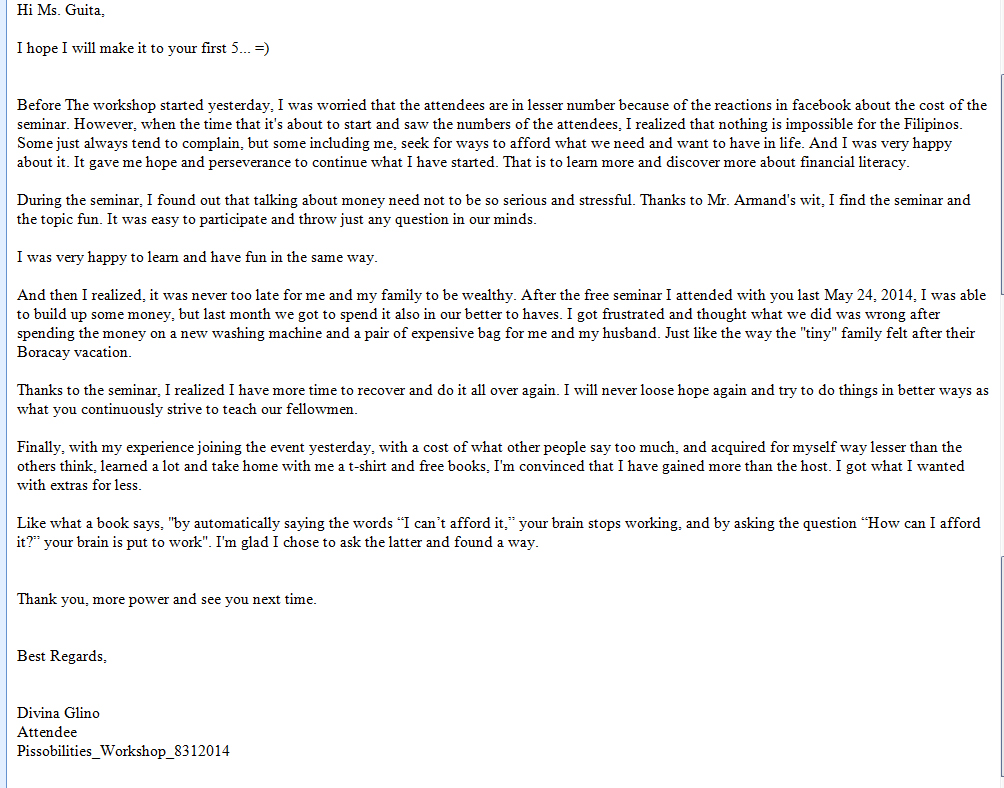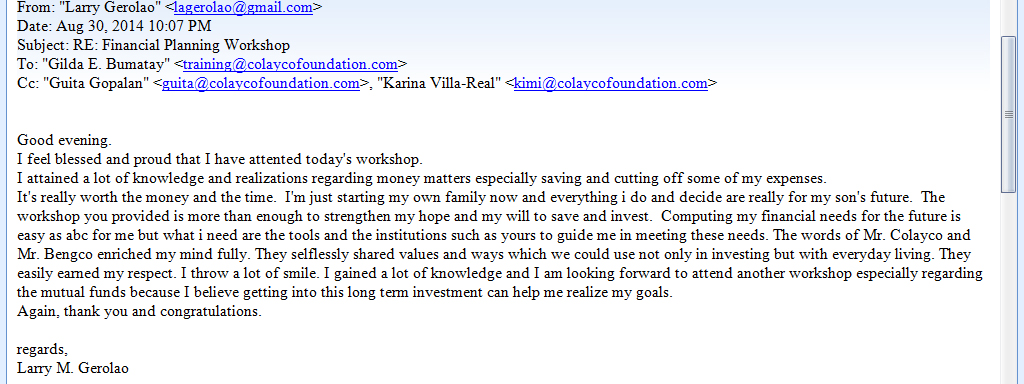Goal Setting 3
In the previous column, I asked you to compute how much your present lifestyle costs you. We are now on the second and third questions of eight questions you need to ask yourself to help you set your financial goals.
2) If you want your lifestyle to improve, how much more improvement do you want?
Since we are planning for many years ahead, it is normal that you want a better lifestyle. This means that you will be spending more for the better lifestyle. You have to write the kind of improvement you want in terms of your budget. Knowing what you are already spending today in your present lifestyle, you can have an estimate of how much you have to be spending also today if you have the lifestyle that you want.
You will probably wonder and think that in the coming years, the cost of what you buy today will be so much more so why am I asking you to compute in today’s cost. You are correct and you should consider that factor which is called inflation when we go into the actual preparation of your financial plan. We will do that later but it is good enough to know how much you would need today for the improved lifestyle that you want.
- How much risk can you take?
Taking risks with your savings is dependent on your personal orientation as well as your age and the kind of investments you already have. The general principle is that nobody can be correct one hundred percent of the time. Everybody makes mistakes. Therefore, it is very possible that you may choose some wrong investments. The key is to be able to rise and learn from failure and in effect, turn the failure as a success. And you can always rise from any kind of failure. Unfortunately however, when it comes to money or business failure, it is only possible to recover if you still have time and energy left.
If you are young, you can take more risk because you have the time and energy. However, just because you are young does not mean that you should only invest in risky businesses. You still have to balance your investments so that if some fail, you will have the chance to recover faster. As they say, never put your eggs in one basket.
As you grow more wealth and gain more experience, you can invest in higher risk opportunities only if you can really afford to lose your investment completely. This means that you have enough investments that, if you lose the risky investment, you can still meet your financial goals. It is almost like gambling. When you gamble, you know that you can lose that amount completely.
Remember, THE HIGHER THE RETURNS, THE HIGHER THE RISKS. It is easy to be attracted to high returns especially when so many friends and relatives tell you stories about how much money they have made. So, study your risk options well.




 Or you could be a traditional Filipino who will want to start a family as early as possible. After all, having a child is a wonderful experience and most Filipinos still value the family as its most important wealth. During my time, when life was a lot simpler, we didn’t even think of family planning. Getting married at an earlier age was more normal than it is today. It seemed then that it was automatic to get married, have children and in the process of it all, save for your own home.
Or you could be a traditional Filipino who will want to start a family as early as possible. After all, having a child is a wonderful experience and most Filipinos still value the family as its most important wealth. During my time, when life was a lot simpler, we didn’t even think of family planning. Getting married at an earlier age was more normal than it is today. It seemed then that it was automatic to get married, have children and in the process of it all, save for your own home.